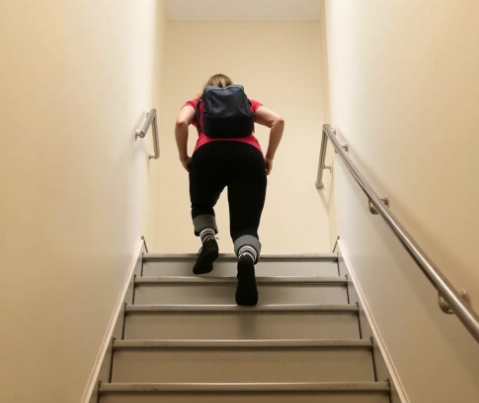Supplement or Bust? How to Tell If You're Getting Results
(Source: EatingWell.com)
Introduction: Navigating the World of Dietary Supplements
In an era where health optimization is a common pursuit, dietary supplements have become a staple in many people's routines. From vitamins and minerals to herbal extracts and specialized blends, the market is flooded with products promising enhanced energy, better sleep, improved immunity, and a myriad of other benefits. However, with so many options and claims, a crucial question arises: How can you truly tell if the supplements you're taking are actually working? An insightful article from EatingWell.com explores this question, offering expert-backed tips to help individuals evaluate the impact of their supplement regimen and make informed decisions about their health investments.
Establishing a Clear Purpose: The First Step to Evaluation
Before even considering whether a supplement is effective, the EatingWell.com article underscores the fundamental importance of having a clear, specific purpose for taking it. Supplements are not magic pills; they are intended to complement a healthy diet and lifestyle, or to address particular deficiencies or health goals.
· Define Your Goal: Are you taking vitamin D for bone health, magnesium for sleep, a probiotic for gut issues, or a multivitamin to cover potential nutritional gaps? Without a defined objective, it becomes nearly impossible to measure success.
· Research the Supplement: Understand what the supplement is purported to do, its typical mechanisms of action, and the scientific evidence (or lack thereof) supporting its claims. This initial research helps set realistic expectations for potential outcomes.
Monitoring Noticeable Changes: Listening to Your Body
One of the most direct ways to gauge a supplement's effectiveness is by observing tangible changes in your physical and mental well-being that align with its intended benefits. The article advises paying close attention to:
· Energy Levels: Do you feel more sustained energy throughout the day?
· Sleep Quality: Is your sleep more restful, and do you wake up feeling refreshed?
· Digestive Comfort: Have symptoms like bloating, gas, or irregularity improved?
· Mood and Focus: Do you experience enhanced mental clarity or a more stable mood?
· Physical Performance: If taking for athletic purposes, do you notice improvements in recovery, strength, or endurance?
· Skin, Hair, and Nail Health: Are there visible positive changes in these areas?
It's crucial to differentiate these changes from other lifestyle factors. Keeping a journal can be beneficial to track symptoms and note any shifts in conjunction with supplement use, helping to establish a clearer connection.
Understanding the Timeline: Patience is Key
The EatingWell.com article rightly points out that seeing results from supplements is not instantaneous. The time it takes for a supplement to exert its effects varies significantly, depending on several factors:
· Type of Supplement: Some supplements, like those for sleep, might show effects relatively quickly (within days). Others, such as those for nutrient repletion (e.g., iron for anemia) or long-term health benefits (e.g., joint support), may require weeks or even months of consistent use to show noticeable changes.
· Individual Factors: Each person's body responds differently based on their unique metabolism, existing nutrient levels, overall health status, and lifestyle.
· Health Goals: Addressing a severe deficiency might yield more dramatic and quicker results than aiming for subtle optimization in an already healthy individual.
· Consistency: Supplements work best when taken consistently as directed. Sporadic use is unlikely to produce desired outcomes.
Therefore, it's essential to set realistic expectations for the timeline and commit to consistent use for an adequate period before concluding whether a supplement is working.
Objective Verification: The Role of Lab Tests
While subjective improvements are important, the most objective way to determine a supplement's efficacy, especially for nutrient deficiencies, is through laboratory testing. The EatingWell.com article strongly advocates for this approach.
· Measuring Nutrient Levels: Blood or urine tests can directly measure levels of vitamins (e.g., Vitamin D, B12), minerals (e.g., iron, magnesium), or other biomarkers (e.g., inflammatory markers, cholesterol) that the supplement is intended to influence.
· Before and After Comparison: By conducting tests before starting a supplement and then again after a period of consistent use (e.g., 3-6 months), you can see quantifiable changes in your body's nutrient status or relevant health markers. This provides concrete evidence of whether the supplement is being absorbed and impacting your physiology as expected.
· Expert Interpretation: These lab results should always be interpreted by a healthcare provider who can provide context and guidance.
Making Informed Choices: Quality and Professional Guidance
The article also emphasizes critical considerations beyond just monitoring effects, focusing on the quality and safety of your supplement choices:
· Reputable Brands: Always opt for supplements from reputable brands that prioritize quality and transparency. Look for companies that adhere to Good Manufacturing Practices (GMPs), which ensure products are consistently produced and controlled according to quality standards.1
· Third-Party Verification: This is a crucial indicator of quality and purity. Look for seals from independent organizations like NSF International, USP (U.S. Pharmacopeia), or ConsumerLab.com. These certifications verify that the product contains what it claims, in the amounts stated, and is free from harmful contaminants.
· Consult a Healthcare Provider: Before starting any new supplement regimen, especially if you have underlying health conditions,2 are pregnant or breastfeeding, or are taking medications,3 it is absolutely crucial to consult with a doctor, registered dietitian, or qualified healthcare provider. They can help assess your individual needs, identify potential interactions with medications, advise on appropriate dosages, and help you determine if a supplement is suitable and safe for your specific health profile.
Conclusion: A Strategic Approach to Supplementation
Ultimately, determining if supplements are truly working requires a strategic and informed approach. As highlighted by EatingWell.com, it begins with a clear purpose, involves careful self-observation and patience, and ideally incorporates objective lab testing to confirm physiological changes. Coupled with the crucial step of choosing high-quality, third-party verified products and seeking professional medical advice, this comprehensive strategy empowers individuals to navigate the supplement landscape effectively, ensuring their chosen products genuinely contribute to their health and well-being.
Labels: Supplement or Bust? How to Tell If You're Getting Results











